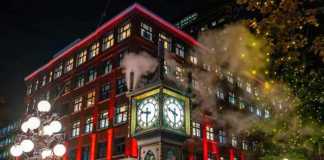My heartbeats seem synchronized to the drumming of Cohen Isberg. A Haida storyteller, he’s singing and drumming amid the impossibly green, moss-drenched forest surrounding Kaysuun, an ancient village on Haida Gwaii. I’m mesmerised by the spirit of Haida Gwaii.
This archipelago off British Columbia’s northwest coast is renowned for its beauty, where on a sunny day like this, rainforested mountains rim the azure Pacific Ocean.
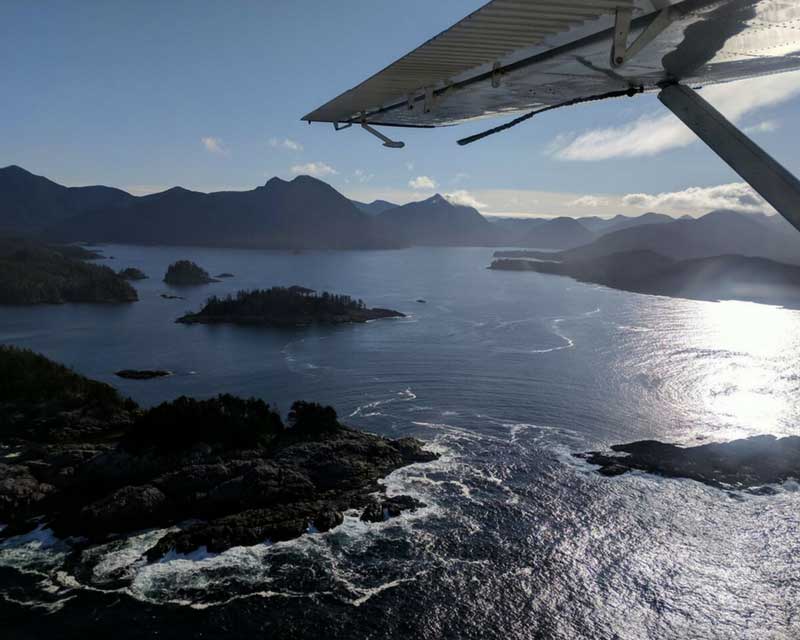
As I sit, it seems a spell has been cast.
Everyone is quiet save for the drummer and his song.
Skillfully, irrevocably, Isberg weaves us into the tapestry of living memory which keeps Kaysuun of long ago alive.
Children would have scampered about right here, playing but also perhaps gathering food in the shallows lapping the beach.
I imagine how the chief’s potlatches (celebratory feasts) must have made these forests ring with ceremonial dancing, songs, drumbeats, and the buzzy chatter of news-sharing, trading and gossip.
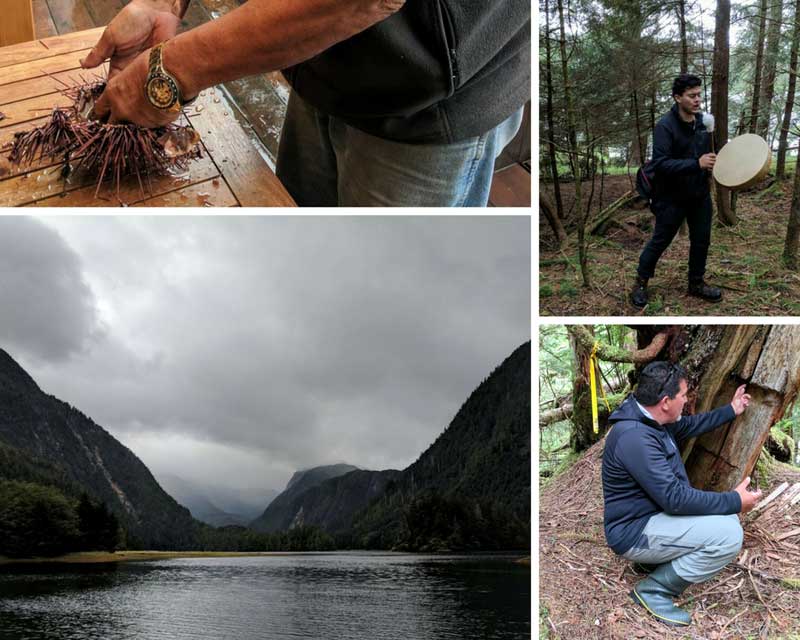
For more things to do in British Columbia see:
Contents
Haida Gwaii
Haida Longhouse Tales
Architecturally imposing cedar longhouses faced with towering poles dramatically lined this shoreline, where house poles declared a clan’s animal symbols (totems) and stories which would be interpreted by visitors.
Abandoned in the 1880s, Kaysuun springs to life under Isberg’s storytelling.
At our feet, he explains, lies Dogfish House, once home to village Chief Cha’atl.
Today all that remains are the sunken remains of a foundation and gigantic cedar beams stretched like a skeleton over the forest floor.
All are returning to the earth, shrouded in moss.
Ocean House Luxury Lodge
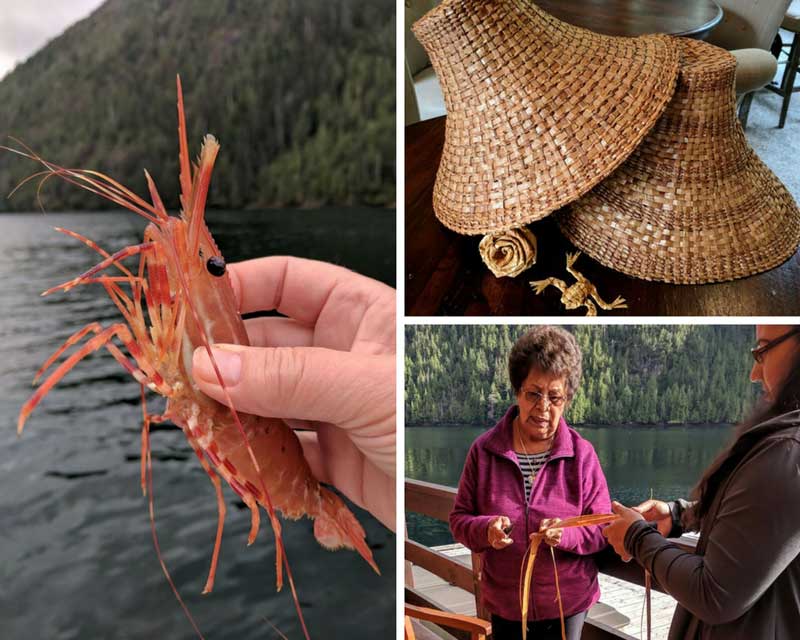
With poles long gone, Isberg knows it’s crucial to continue the traditions, sing the storytelling songs, and thus reveal and keep alive the traditions of his ancestral lands.
After all, this is what Haida Gwaii means: “Islands of the Haida People.”
Despite the decimation of their population from some 30,000 to 40,000 to 500 to 1,000 persons by the late 1800s after European contact, the Haida have not merely survived, they are thriving.
This is where Ocean House comes in. It’s the brand-new luxury floating lodge owned by HaiCo, aka Haida Enterprise Corporation, which operates several Haida-run businesses.
During the three-, four-, and seven-day trips, Haida chiefs and cultural ambassadors stay at the lodge, telling stories, drumming, guiding trips, and offering workshops on such Haida traditions as carving, or cedar-bark weaving.
Here at Kaysuun for instance, historian Captain Gold accompanies Isberg on our excursion, along with Ocean House’s indispensable outside operations manager, Sascha “Luu Tydals” Jones, an equally informative Haida guide.
Culturally Modified Trees
Jones guides us to view some Culturally Modified Trees or CMTs.
These are still-living cedar trees which were live-harvested to make longhouse planks and other items.
Kneeling before an immense tree where a clear “plank-cut” remains visible, Jones points to the precise cut, “We can tell this was harvested with stone, not post-contact iron tools because there’s no burn mark. We only took what we needed so trees could keep on living.”
Hiking, boating, and in fact, just being here on Haida Gwaii offers reflective meditation, because the land breathes spirits like this old-timer of a tree.
What stories could it tell?
Returning to our boat to en route to our lodge, I reflect on how different these forests would have been, with a scattered but vibrant population of some 30,000+ people.
Kaysuun was a winter village, thanks to the protection of the forest, but during spring, the villagers “broke camp” and left.
Clever architectural design meant houses were modular: villagers disassembled the longhouses, putting planks on canoes to make large “rafts”, then paddled to their summer village site.
Here, fish and other foods would be collected, dried and stored for winter. Before the weather turned, the routine was repeated.
South Moresby Island
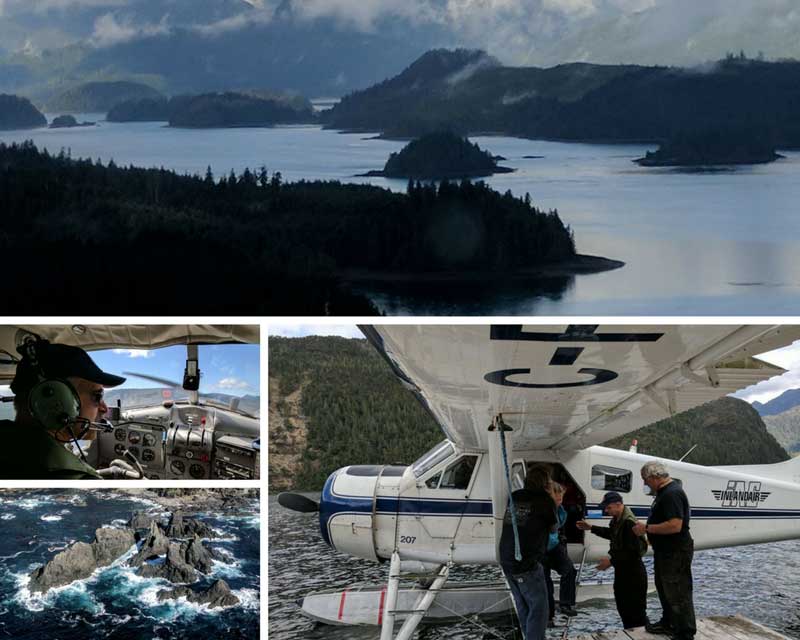
Although Kaysuun is intriguing, I can’t wait to see SGang Gwaay, the ancient Haida village off South Moresby Island famous for its several still-upright totem, mortuary and memorial poles.
Just getting there is fantastical: a brilliantly sunny day gives our group a splendid view of the west coast of Moresby Island from the Beaver float plane.
Eyes riveted to the window, I see jaw-dropping views of the craggy coastline beaten by immense ocean swells and we also discover humpback whales in deeper water.
Arriving at Rose Harbour, we disembark onto a Zodiak, then scoot to SGang Gwaay, which is tended by three Haida Watchmen who offer guided tours to small groups of people.
If a tour takes a bit longer for any reason, the next guests have to wait their turn.
For us, this means bobbing about in the Zodiak, where pilot Goetz Hanisch encourages us to look for seals and birds in the rocky islets.
We are lucky to spot two tufted puffins but I long for my binoculars to see them better.
Sgang Gwaay Village
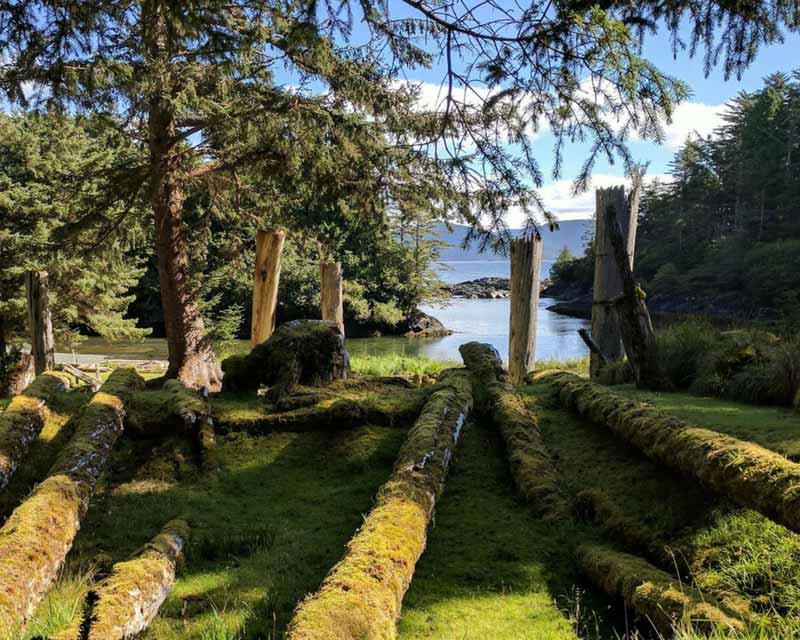
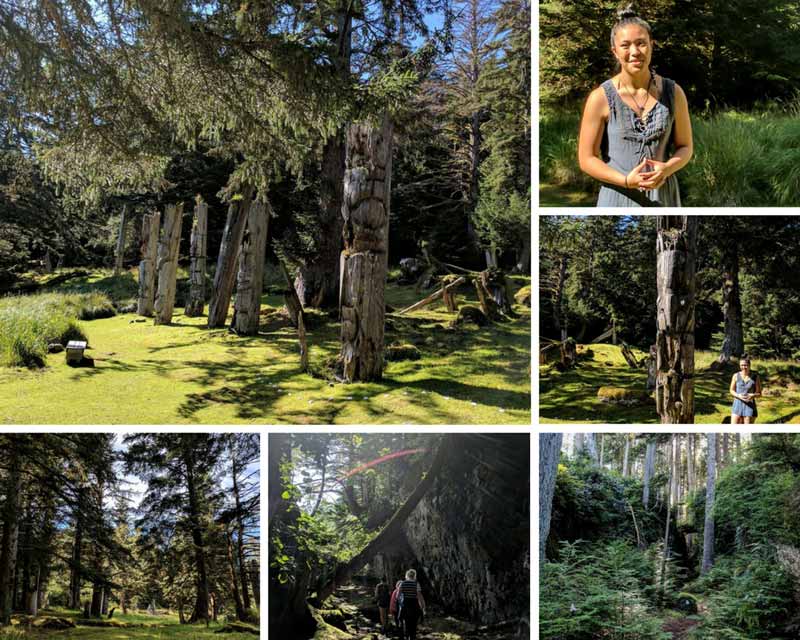
At SGang Gwaay, Haida Watchman Teresa Russ greets us and I am immediately impressed by her quiet grace and thoughtful wisdom.
She explains her Haida name to me, “My grandmother gave it to me when I was little: Xuuya Kaayuu Gus.
It means ‘The Raven that is always singing’. I received it because when my mother took me to her for naming, I was a little girl, singing all the time.”
To me, Russ seems like a forest spirit completely at one with SGang Gwaay.
Not only does she interpret each pole’s story but she also answers questions with sensitivity.
When asked about how the Haida feel about some totem poles having been removed by museum curators, she says, “As much as we want them back, we appreciate they are loved and appreciated throughout the world.”
SGang Gwaay is impressive.
Totem poles stand, facing the cove and I imagine how impressive the approach must have been when the village was thriving.
The Spirit of Haida Gwaii
In fact, back at the lodge, Haida cultural ambassador and historian Captain Gold spins the story of his first visit where he paddled some 250 km in stormy seas before landing on the rocky beach.
“In my mind, I saw all these children pouring out of the village, running about me, splashing in the water and kelp. The rest of the village opened up to me: I could see it alive. I saw this lady packing a bent box. So many people laughing and welcoming me… I landed on the beach stern first: it’s what we did to show we come in peace because if you landed bow first on the beach, you could be dangerous.”
With storytelling like this, with sites such as SGang Gwaay and Kaysuun to visit, with weaving workshops with Gladys “Jiixa” Vandall and with such activities as kayaking, fishing, birdwatching and other activities to enjoy, who can resist the spirit of Haida Gwaii?
Haida Gwaii Accommodation
Ocean House is a new place to stay in Haida Gwaii.
However, during my trip, I visit Peel Inlet, where Ocean House will be permanently docked. With a protected bay to explore by kayak and the possibility of wildlife sightings, it promises to be a fabulous destination for these explorations I’ve done, plus eco-adventures such as wildlife watching, kayaking, photography and more.
And rest assured, Haida-decorated, comfortable rooms, dining hall, upstairs lounge and fabulously fresh foods await you.
HaiCo also owns Westcoast Resorts Englefield Bay Lodge, which is a must-visit if you’re itching for world-class ocean fishing for chinook salmon.
Compare prices of hotels in Haida Gwaii here
How to get to Haida Gwaii
Haida Gwaii is accessible by ferry or by aeroplane.
Flights to Haida Gwaii include floatplanes from Prince Rupert to Masset and Sandspit. Vancouver to Haida Gwaii flights arrives daily at Skidegate.
It’s a scenic 11/2-hour flight. Charter flights cater for Haida Gwaii tours from Vancouver and Grande Prairie (Alberta) during the summer months.
BC Ferries Haida Gwaii
BC Ferries is a six-hour trip between Haida Gwaii and Prince Rupert.
The benefit of the ferry is you can take your vehicle onboard.
There’s also a Haida Gwaii ferry that travels between Graham Island and Moresby Island several times a day.
These are the two main islands in the region that have permanent inhabitants.
For more see BC Ferries schedule Haida Gwaii.
For more about Canada read:
Go Haida Gwaii
For more information on visiting Haida Gwaii see Haida Heritage Centre and Museum and Haida Gwaii Tourism.


Plan Your Trip

Rent A Car – Find the best car rental rates at Discover Cars. They compare car hire companies to provide you with the best deal right now.

Find A Hotel – If you’re curious about this article and are looking for somewhere to stay, take a look at these amazing hotels.
